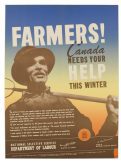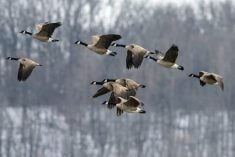WINNIPEG — The recent weakness of the Canadian dollar has helped cushion the blow from ample American hog supply and falling U.S. prices, says a Saskatchewan government livestock economist.
Brad Marceniuk says the declining Canadian loonie has helped keep the value of Canadian hogs, more attractive to outside buyers.
“Canadian prices are based off U.S. markets, so right now if the (Canadian) dollar goes down a cent, our price goes up $2 per hundred kilograms (approximately),” said Marceniuk.
It’s been an especially turbulent start to the year for the loonie as it has dropped 8.9 percent since Dec. 31.
Read Also

Women who fed a nation
More than 40,000 young women supported the war effort between the 1940s and early 1950s, helping grow and harvest crops amid labour shortages. They were called Farmerettes.
The number of hogs being sent to American processors has swelled over the past year, which in turn has put pressure on U.S. hog prices. The nearby Chicago futures contract is down about 16 percent since the start of the year.
“We had 2.3 million head slaughtered in the U.S. last week and that was up four percent from a year ago,” said Marceniuk, adding a rise in slaughter numbers is creating surplus pork supply that leads to lower prices. Also, a sustained work slowdown by U.S. west coast port workers that has stalled pork exports is also weighing on U.S. hog prices.
“So after two months, we’ve seen prices get pushed down, but in Canada, because the dollar is going down, we haven’t seen quite as much an effect, so maybe the U.S. prices have come down 20 percent, but our prices have come down 14 or 15 percent in Canadian terms,” Marceniuk said.
Marceniuk expects prices to stay under pressure because there doesn’t appear to be any shortage of American hogs.
“In 2015, production is supposed to be higher than 2014,” he said, adding the one caveat is the potential for disease.
The outbreak of porcine epidemic diarrhea virus began in the spring of 2013 and reached epic proportions last spring and summer, resulting in the deaths of millions of hogs. Since then, vaccines and natural herd immunity have helped curtail the number of infections.
“I think what’s happened is PED has not been as much of a factor in the U.S. as it was the same time a year ago. Supplies are starting to increase,” said Marceniuk.
Other factors affecting the market include increasing feed costs and record-high prices for beef, which have driven some consumers over to the pork shelves.














